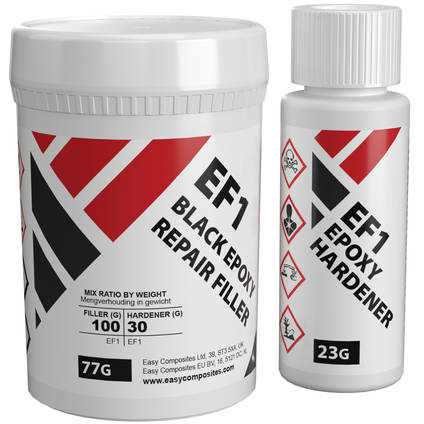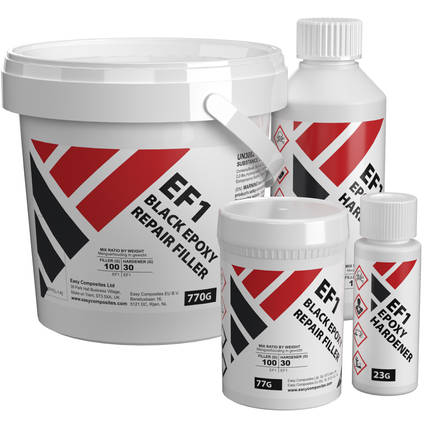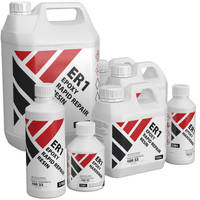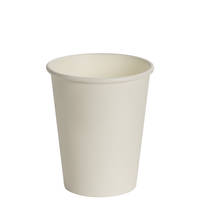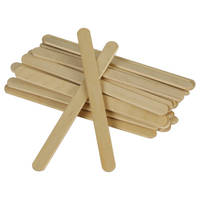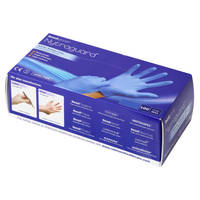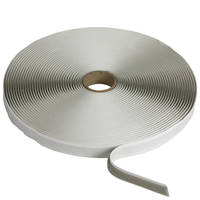Need any help or advice?+44 (0)1782 454499
Downloads (3)
This is a chemical product. Before storage or use you must download and read the accompanying safety and technical datasheets.
| Safety Datasheet (SDS) - EN | ||
| Safety Datasheet (SDS) - NL | ||
| Technical Datasheet (TDS) |
Specification
Product Data
| Colour | Black | |
|---|---|---|
| Chemistry / Material | Epoxy | |
| Viscosity | 15000 | mPa.s |
| UV Resistance | Moderate | |
| Brand | Easy Composites | |
| Shelf Life | 12 | Months |
Cured Mechanical Properties
| Max Service Temp | 81 | °C |
|---|---|---|
| Hardness | 85 (Hard) | Shore D |
| Flexibility | Hard / Rigid | |
| Tensile Strength | 50 - 60 | MPa |
| Flexural Strength | 80 - 90 | MPa |
| Compressive Strength | 72 - 75 | MPa |
| Tg Onset (DMA) | 80 - 85 | °C |
Pot Life and Cure Times
| Pot Life (Typical) | 11 | mins |
|---|---|---|
| Initial Cure Time | 6 | Hrs |
General Properties
| Gross Weight | 0.135 | kg |
|---|
Shipping Information
Restrictions
In the currently selected pack size, this product is classed as dangerous goods in limited quantity for the purposes of transport.
Shipping is possible to all UK addresses, including the Channel Islands, without restriction. However, due to being classed as 'dangerous goods', delivery times are not guaranteed on any delivery service.
Shipping to EU countries is now done through our European subsidiary based in the Netherlands. All EU customers should use www.easycomposites.eu.
To check availability of shipping to any other country, add the item to your basket and use the shipping calculator on the basket page.
For a full information regarding the shipment of dangerous goods to all destinations, see our delivery information page.
Package Size
There are no package size restrictions or surcharges for this product.
Delivery Cost
To find the availability and cost for delivery of this item to your address, add it to your basket and then use the instant shipping calculator on the basket page.
EF1 Black Epoxy Repair Filler
- EP-FILL-01
Hazardous
- No reviews
Fast curing, black, two-part filled epoxy repair filler with excellent flexural strength and excellent bond strength. Perfect for making repairs to damaged carbon fibre parts or sealing edges on cut sandwich panels.
Sold as a kit (filler and hardener). Available to buy online in 100g and 1kg kits.
PRODUCT VERSIONS
Kit Size
AVAILABILITY:More than 10 availablefor immediate shipping
We won’t be beaten on price!
If you believe you’re buying an equivalent product cheaper elsewhere, contact us to discuss your requirements.
Fast curing, black*, two-part filled epoxy repair filler with excellent flexural strength and excellent bond strength.
Much less thick than a conventional filler (like body filler) this epoxy carbon fibre repair filler is more of a very thixotropic resin allowing it to easily be teased into cracks on a repair where its excellent bond strength and black pigmentation make it the perfect choice for repairs to light damage on carbon fibre parts. With the repair filler applied, some strength will be restored to damaged parts and worsening of the damage is much less likely to occur. Repaired areas can be sanded smooth and polished or lacquered over the top meaning the parts can be visually restored amazingly well.
The filler is supplied complete with the necessary fast epoxy hardener which will cure the filler in around 6hrs.
* Colour Matching
Please note that although we describe the filler as 'black' there are, of course, a range of blacks. To be more accurate the filler is a very dark grey, designed to be a match for the colour of carbon fibre which although also described as 'black' is also a very dark grey. If you need an exact match for a specific true black we would suggest a clear resin and black pigment.
Typical Uses
Our EF1 Black Epoxy Repair Filler is suitable for repairing cracks or gaps in carbon fibre parts to improve the appearance of a damaged area, add strength and discourage deterioration of the damaged area. Once cured the filler can be polished to a gloss.
Our EF1 Black Epoxy Repair Filler can also be used to seal the edges on sandwich core panels (route a few mm of the core material away and then smooth filler into the cavity). Edges filled in this way not only perfectly seal the panel from water ingress they also provide an attractive edge which can be polished up to a gloss black* finish.
Further Information
Compatibility Information - Dos and Don'ts
Although by no means an exhaustive list, the mould materials, pigments and additives listed below have all been tested and are known to work well with Black Epoxy Repair Filler.
Compatible Moulds
- Uni-Mould Mould System
- Epoxy Tooling Gelcoat
- Epoxy gelcoat based moulds
- Polypropylene and polyethylene sheet
- Aluminium
- Toughened Glass (eg. flat sheet manufacture)
Compatible Pigments
- Epoxy Colour Pigment * See Note Below
- Translucent Tinting Pigment * See Note Below
Compatible Fillers/Resins
- All dry filler powders
* Although these pigments are technically compatible with EF1 Black Epoxy Repair Filler, the already charcoal colour of the filler is likely to make it quite hard to pigment it to other colours in anything other than a dark shade.
Key Processing Information
- Ease of Use: Suitable for professional and hobby use (follow SDS advice).
- Odour: EF1 is almost odourless.
- Safety Precautions: Wear gloves and goggles and work in a well ventilated area. Always read the SDS before use.
- Ambient Conditions: Can be used from 15-30°C (59-86°F) although pot-life and cure time will be affected significantly. Recommended working at an ambient of 20-25°C (68-77°F).
- Degassing: Not necessary in most cases. Simply mix and use.
- Mix Ratio: Mix 'Resin' and 'Hardener' 100:30 by weight. Use digital scales.
- Mixing: Mix thoroughly by hand for at around 2 minutes.
- Pot-Life: 11mins. Be sure to use your resin before this time.
- Exotherm (Over-Heating): Resin will heat-up whilst it cures. Mix in small batches and use expediently. Mixed resin in a pot will quickly overheat (exotherm) and can smoke/ignite. Never leave mixed resin unattended.
- Cure Time/Demold: At 25°C (77°F) you can expect a typical cure time to be 6hrs.
- Pigments and Fillers: A wide range of pigments and fillers can be added to change the properties and appearance of Resin.
Fast curing, black*, two-part filled epoxy repair filler with excellent flexural strength and excellent bond strength.
Much less thick than a conventional filler (like body filler) this epoxy carbon fibre repair filler is more of a very thixotropic resin allowing it to easily be teased into cracks on a repair where its excellent bond strength and black pigmentation make it the perfect choice for repairs to light damage on carbon fibre parts. With the repair filler applied, some strength will be restored to damaged parts and worsening of the damage is much less likely to occur. Repaired areas can be sanded smooth and polished or lacquered over the top meaning the parts can be visually restored amazingly well.
The filler is supplied complete with the necessary fast epoxy hardener which will cure the filler in around 6hrs.
* Colour Matching
Please note that although we describe the filler as 'black' there are, of course, a range of blacks. To be more accurate the filler is a very dark grey, designed to be a match for the colour of carbon fibre which although also described as 'black' is also a very dark grey. If you need an exact match for a specific true black we would suggest a clear resin and black pigment.
Typical Uses
Our EF1 Black Epoxy Repair Filler is suitable for repairing cracks or gaps in carbon fibre parts to improve the appearance of a damaged area, add strength and discourage deterioration of the damaged area. Once cured the filler can be polished to a gloss.
Our EF1 Black Epoxy Repair Filler can also be used to seal the edges on sandwich core panels (route a few mm of the core material away and then smooth filler into the cavity). Edges filled in this way not only perfectly seal the panel from water ingress they also provide an attractive edge which can be polished up to a gloss black* finish.
Further Information
Compatibility Information - Dos and Don'ts
Although by no means an exhaustive list, the mould materials, pigments and additives listed below have all been tested and are known to work well with Black Epoxy Repair Filler.
Compatible Moulds
- Uni-Mould Mould System
- Epoxy Tooling Gelcoat
- Epoxy gelcoat based moulds
- Polypropylene and polyethylene sheet
- Aluminium
- Toughened Glass (eg. flat sheet manufacture)
Compatible Pigments
- Epoxy Colour Pigment * See Note Below
- Translucent Tinting Pigment * See Note Below
Compatible Fillers/Resins
- All dry filler powders
* Although these pigments are technically compatible with EF1 Black Epoxy Repair Filler, the already charcoal colour of the filler is likely to make it quite hard to pigment it to other colours in anything other than a dark shade.
Key Processing Information
- Ease of Use: Suitable for professional and hobby use (follow SDS advice).
- Odour: EF1 is almost odourless.
- Safety Precautions: Wear gloves and goggles and work in a well ventilated area. Always read the SDS before use.
- Ambient Conditions: Can be used from 15-30°C (59-86°F) although pot-life and cure time will be affected significantly. Recommended working at an ambient of 20-25°C (68-77°F).
- Degassing: Not necessary in most cases. Simply mix and use.
- Mix Ratio: Mix 'Resin' and 'Hardener' 100:30 by weight. Use digital scales.
- Mixing: Mix thoroughly by hand for at around 2 minutes.
- Pot-Life: 11mins. Be sure to use your resin before this time.
- Exotherm (Over-Heating): Resin will heat-up whilst it cures. Mix in small batches and use expediently. Mixed resin in a pot will quickly overheat (exotherm) and can smoke/ignite. Never leave mixed resin unattended.
- Cure Time/Demold: At 25°C (77°F) you can expect a typical cure time to be 6hrs.
- Pigments and Fillers: A wide range of pigments and fillers can be added to change the properties and appearance of Resin.
Specification
Product Data
| Colour | Black | |
|---|---|---|
| Chemistry / Material | Epoxy | |
| Viscosity | 15000 | mPa.s |
| UV Resistance | Moderate | |
| Brand | Easy Composites | |
| Shelf Life | 12 | Months |
Cured Mechanical Properties
| Max Service Temp | 81 | °C |
|---|---|---|
| Hardness | 85 (Hard) | Shore D |
| Flexibility | Hard / Rigid | |
| Tensile Strength | 50 - 60 | MPa |
| Flexural Strength | 80 - 90 | MPa |
| Compressive Strength | 72 - 75 | MPa |
| Tg Onset (DMA) | 80 - 85 | °C |
Pot Life and Cure Times
| Pot Life (Typical) | 11 | mins |
|---|---|---|
| Initial Cure Time | 6 | Hrs |
General Properties
| Gross Weight | 0.135 | kg |
|---|
Uncured resins are classed as dangerous goods and would need to be disposed of correctly. For domestic users, usually your local council recycling centre will have a disposal service for such chemicals or containers.
Because cured resins are inert and safe for disposal it's often easiest to mix un-needed or out-of-date resin and hardener together to cure them. Once cured they can be disposed of with general waste.
Unlike other resin systems such as polyester or vinylester, it's very important to get the mix ratios accurate with epoxies. If you get the mix ratio wrong by a small amount (let's say a couple of grams on a small mix) then the resin will still cure but the mechanical properties won't be quite as good as they would have been if the mix ratio had been exactly right. However, if you were to be out by anything more than a few grams then you might find that the resin would not be properly hard when cured and/or may have a tackiness to the finish. This would result in a much weaker repair and needs to be avoided by careful measurements.
No, we wouldn’t suggest Epoxy Resins for lining a fuel tank. In general, epoxies have good resistance to petrol and many of the chemicals and additives found within pump fuel however the ethanol in fuel is known to cause problems over time and so specialist tank lining resins (often novalac vinylester based) should be used instead. One such product is GTS 1750 which is sold by Caswell Europe.
No, this epoxy in common with other epoxies does not attack expanded polystyrene
We have not specifically saught FDA (or similar) approval for this resin system so if you were to make these plates commercially then you would either need to make a plate using this resin system and then have it tested and approved safe for food use or use a different resin system that has specifically been approved for food use. Mixed and cured fully and properly the resulting plastic should be stable and non-toxic but testing would be required to prove this. Regarding being dishwasher safe; a dishwasher is a very harsh environment (abrasive, high temperatures, caustic) and so I think it would be quite hard on any resin system. By all means conduct your own tests but I would strongly recommend that a carbon fibre plate was not marketed as 'dishwasher safe'.
Above the HDT of a resin system it will soften slightly and its mechanical properties will start to fall away however a thermosetting plastic (like epoxy) is NOT a thermoformable plastic so it will not start to flow again such that you could melt it out of your part. It's more likely to become slightly soft and then possible more brittle again before eventually starting to burn if you too the temperature high enough. It sounds to me like you need a thermoformable plastic (aka a thermoplastic) with a relatively low melting point. I'd suggest something like PCL.
An elevated temperature post-cure is not required for parts made with epoxy resin however, post curing parts will improve the mechanical properties of the resin (and therefore the part) and so if you have the means to do it then it's certainly recommended. One major advantage to post-curing epoxy is that you will raise the HDT (heat distortion temperature) of the part meaning that it's less likely to soften or distort in higher temperatures. This can be particularly important for parts like a vehicle panel (i.e. hood/bonnet) which could get very hot in the sun. Without a post-cure there is a good chance that the part would effectively post-cure itself 'in situe' when it's in direct sunlight which can cause the resin to soften, sink and then re-harden. When this happens to a fitted part it's likely to distort the surface finish. A part that had been post-cured prior to installation would not have this problem.
Epoxy resins have very little odour and so it's quite viable to use them indoors (i.e. in your house) without upsetting anyone. The resin is almost completely odourless and the hardener has an amonia smell which doesn't really carry or linger.
In this respect epoxies are very different to polyester and vinylester resin which has a very strong smell and cannot realistically be used indoors. As always, you should still follow safety precautions and ensure adequate ventilation of your work area.
Although generally cured epoxies are non-hazardous, none of the products we have are certified food safe and thus we cannot recommend their use with food products.
We recommend Acetone. The brushes must be cleaned before the resin has cured. If you can’t get hold of acetone it’s also possible to use methylated spirits or neat alcohol.
In really simple terms you can think of 1kg of the Epoxy Resin as being 1L. If you want to be really exact (for example if you want to mix the resin and the hardener by volume and not by weight (which we don't recommend because it's unnecessarily complicated) then the relative density of the resin and the hardener, and the mixed product, can be found on the technical datasheet.
We can send any quantity of resin to Portugal. We would use a TNT Road service. To find the shipping cost for any item, simply add it to your basket and then click the 'Estimate Shipping' button on the basket page. The price will then be shown once you chose your shipping country (Portugal).
The B stage of the cure is when the resin has cured enough to be firm but still tacky. When touching with a gloved finger, the resin should feel tacky but not leave any residue on the glove.
Epoxy is sensitive to low temperatures so we would not attempt to try and cure the resin at very low temperatures such as below 15 °:C. At those temperatures, the cure time will be lengthened considerably.
One of the most significant problems caused by low temperatures (much below 20°C) is that the resin will be considerably thicker which affects its ability to self-degas after pouring.
Also, curing epoxies are hydroscopic so the low temperature environment may well leave the resin vulnerable to absorbing moisture, especially if the environment is relatively damp or high in humidity as can be found in some outdoor workshops or home garages.
As a result, for best results we always recommend working in an environment that is 20°C or above.
The correct mixing ratio is 100 parts filler to 33 parts hardener by weight.
No, IPA is NOT a release agent and as such would not work to stop a gel or resin from sticking. A high quality easy to use chemical release agent would be our Easy-Lease Chemical Release Agent.
Yes, for non-structural cracks and voids, the Black Filler is ideal to fill the damage. Once cured it can be sanded to match the level of the surrounding material and then polished to a high gloss.
Yes, sort of. You should take a look at the notes on the colour of the filler. It is black but there are different types of black. We intend the filler to match the colour of carbon fibre which is, to be precise, very dark grey, rather than true black. The filler will polish up nicely and when polished can be glossy and very dark grey/black.
The Repair filler will stick to steel no problem. For the best adhesion, we recommend you key the surface and fully clean and degrease it prior to applying the filler.
This filler can be applied in much the same way as any other filler. A plastic or wooden spreader is perfectly suitable. Once it's cured (which is quite quick) it can be easilly sanded and polished to get a good finish.
Yes, this filler can be sanded level with the surrounding area then painted over for an invisible repair.
yes this filler can be used on parts exposed to water and sunlight. Take care to ensure the resin is fully cured before exposing it to water.
...Can I use this to glue in an aluminium insert that has come loose on my carbon bike frame? I am looking for a suitable adhesive to use, if this filler is not suitable can you advise of something else please? I am thinking of something like a two part epoxy glue.
It would be possible but our Black Epoxy Filler would not be our recommended method of bonding a fastener back into a carbon fibre frame. Instead, we would recommend our VuduGlu VM100 which is an MMA adhesive, ideal for this application. MMA's have similar bond-strength to epoxies but they provide quite an aggressive etch into the carbon which makes a strong bond more reliably achieved.
Being epoxy based, our Black Repair filler will form a good mechanical bond to the vinylester resin, especially in a non-structural cosmetic application such as this. The filler will fill the pinholes once worked into place and when cured, can be sanded back level with the surrounding surface and finally polished to give as close a match as possible.
If it's just some de-lamination of the existing fibres (i.e. the fibre is still there but it's started peeling away from the surrounding material) then you don't need the filling properties of this epoxy filler and you'd probably be better just using some epoxy resin or adhesive. I think I would suggest using our ET500 Epoxy Structural Adhesive and tightly wrapping it with some Composites Shrink Tape whilst it cures.
ASK YOUR OWN QUESTION
Customer Product Reviews for EF1 Black Epoxy Repair Filler
SUBMIT YOUR OWN PRODUCT REVIEW
We publish all reviews for verified purchases. Submit your own review and help other customers with their choices.SUBMIT YOUR OWN PRODUCT REVIEW
We publish all reviews for verified purchases. Submit your own review and help other customers with their choices.Shipping Information
Restrictions
In the currently selected pack size, this product is classed as dangerous goods in limited quantity for the purposes of transport.
Shipping is possible to all UK addresses, including the Channel Islands, without restriction. However, due to being classed as 'dangerous goods', delivery times are not guaranteed on any delivery service.
Shipping to EU countries is now done through our European subsidiary based in the Netherlands. All EU customers should use www.easycomposites.eu.
To check availability of shipping to any other country, add the item to your basket and use the shipping calculator on the basket page.
For a full information regarding the shipment of dangerous goods to all destinations, see our delivery information page.
Package Size
There are no package size restrictions or surcharges for this product.
Delivery Cost
To find the availability and cost for delivery of this item to your address, add it to your basket and then use the instant shipping calculator on the basket page.
RELATED PRODUCTS
CUSTOMERS ALSO PURCHASED
RELATED PRODUCTS
CUSTOMERS ALSO PURCHASED
100% SECURE
PAYMENT METHODS


Easy Composites Ltd, registered in England 7486797. All content copyright (C) Easy Composites Ltd, 2025. All rights reserved.
